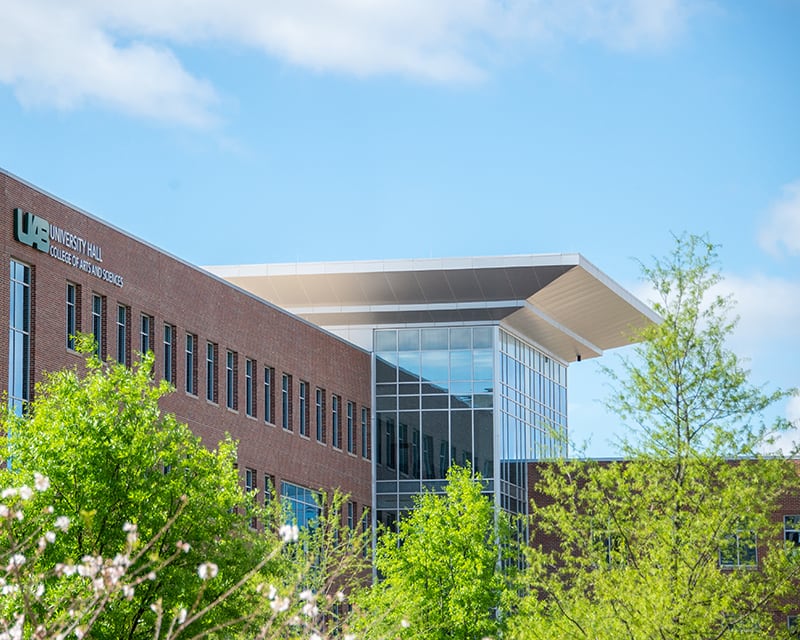 University and College leadership, along with community members and building architects and contractors, broke ground on a new arts and sciences academic building in the Fall of 2017.
University and College leadership, along with community members and building architects and contractors, broke ground on a new arts and sciences academic building in the Fall of 2017.
Designed to replace the aging Humanities Building, which was constructed in 1971, University Hall opened in August 2019. Today it is home to seven departments: Anthropology, Computer Science, English, World Languages and Literatures, Mathematics, Philosophy, and Social Work.
Located on the Green and anchoring the west side of UAB's campus, University Hall contributes significantly to the growth of our reputation: in faculty and student recruitment efforts, in providing innovative teaching and learning experiences, and in the enrichment of the campus environment.
This state-of-the-art building is a critical piece of overall strategic plan for the College of Arts and Sciences, which includes other facility renovations, program development, and faculty and student recruitment to establish a globally competitive university here in the city of Birmingham.
Building Design
The building was designed by local architecture firm Goodwyn Mills Cawood. It was constructed in 18 months by MJ Harris.
Inside the building, the departmental offices are arranged to allow for departmental growth to ebb and flow without needing renovations. Each departmental reception area has a special self-selected artistic wall-covering representing their subject matter.
The classroom lighting is programmed to harvest daylight – it will shut off the row closest to the windows if it senses there is enough daylight provided to save energy. Accessibility was also a priority in the building design: Due to the great elevation changes at this site, the building has ground entrances on two levels. There is also a ramp that allows access from the campus green elevation to the second floor lobby entrance to provide multiple choices of paths. There is also ADA parking adjacent to the building.
Additional Signature Features
- UAB's first LEED-certified building
- Bioswale water-efficient landscape
- 110,000 square feet
- 300-seat auditorium
- 23 classrooms
- 167 faculty offices